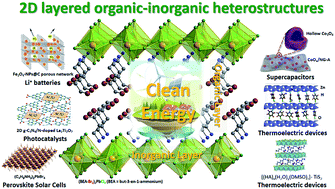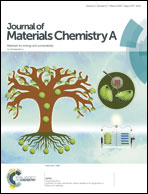2D layered organic–inorganic heterostructures for clean energy applications
Abstract
The recent high interest and the fast development of heterostructures of two-dimensional (2D) layered materials are driven by their unique properties and many potential applications. One of the advantages of 2D layered nanostructures is their attractive physical, chemical and mechanical properties that could be designed and tuned by manipulating their composition and thickness at the atomic or molecular level during the synthesis process. This review firstly introduces several versatile chemical approaches for the bottom-up fabrication of 2D layered organic–inorganic hybrid materials. A few types of nanolayered organic–inorganic materials and their tunable properties are then presented and discussed from the view of having high-performance characteristics. The chemical attributes that would enhance the properties of nanolayered organic–inorganic materials are also assessed. This article then focuses on the applications of nanolayered organic–inorganic hybrid materials in clean energy research such as batteries, supercapacitors, water splitting, perovskite solar cells and thermoelectric devices. The final section discusses current challenges and future directions of nanolayered organic–inorganic hybrid materials.

- This article is part of the themed collection: Recent Review Articles


 Please wait while we load your content...
Please wait while we load your content...